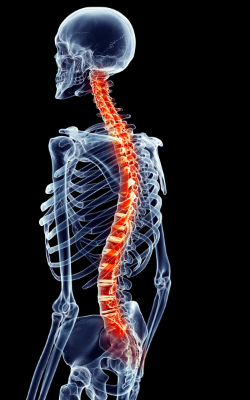It’s a great time of year to take a moment and look around your office, classroom or house to pick up on some bad posture habits. Do you see adults and children hunched over their ipads or phones, leaning on their desk, or sitting for hours with no breaks?
Take an hour or two, before you head back to work or school, to teach your family about the negative effects of bad posture and help them set up their work or play stations so they can avoid injuries in the future.

What is good Posture?
Good posture means your body is positioned correctly and the weight is evenly balanced so that the skeleton, muscles and ligaments aren’t overstretched or strained.
It makes sure your spine has three curves and the muscles on each side of the spine are strong and well balanced. It will prevent pain in your neck or back, make you more mobile and less tired.
Good posture doesn’t need to be associated with standing stiff to attention. It means you are loose and flexible!
Posture to Avoid Text Neck
Unfortunately we are all guilty of it. Text neck is a common term describing neck pain caused from leaning over or hunching to watch your phone or ipad. Depending on your age, you could be in this position for hours while watching videos or reading, which can then lead to neck pain and possible long term effects.
We suggest you do the following to avoid Text Neck –
- Have regular breaks to stretch and move around
- When using your device, hold it close to eye level to avoid rounding your spine
- When sitting, prop up your device on a pillow or other object to raise up in line with eyes
- Yoga stretches or Pilates can help with pain and improving posture in future.


Good Posture at your Desk
Whether you are at work or at school, we continue to spend more and more time at a desk using a keyboard or touch screen.
It is so important to ensure your workstation is set up efficiently to ensure proper positioning and posture while working.
Of course, taking regular breaks (min 20mins) is imperative to rest neck and back muscles and minimise eye fatigue also.
Try setting up your workstation using these tips
- Head – Ensure your head is in a neutral position (or slightly forward) and head is in line with torso
- Back – Check your chair is allowing you to sit up straight with your back well supported and body is in front of the keyboard
- Elbows – Elbows should be close to the body with an angle of about 90-120 degrees
- Wrist – Ensure they are neutral and level with forearms
- Fingers – Fingers to be relaxed and curved
- Hips – Hips to be at approximately 90 degrees
- Knees – To also be at 90 degrees
- Legs – Try not to cross your legs
- Feet – Keep them flat on the floor
Also investing in a standing workstation is a great idea to vary your positions during the day.
Need help with a Posture related injury?
If you are suffering from Text Neck or any pain and discomfort after working or studying, it is important to change your habits as soon as possible. Alter your workstation to improve your posture and set up a stretch chart to remind you of the stretches to do in your break times.
If you are still experiencing pain or need help with setting up a stretch plan, please book a time to see one of our Physiotherapists. You can Book Online or call us on 3869 1099.

